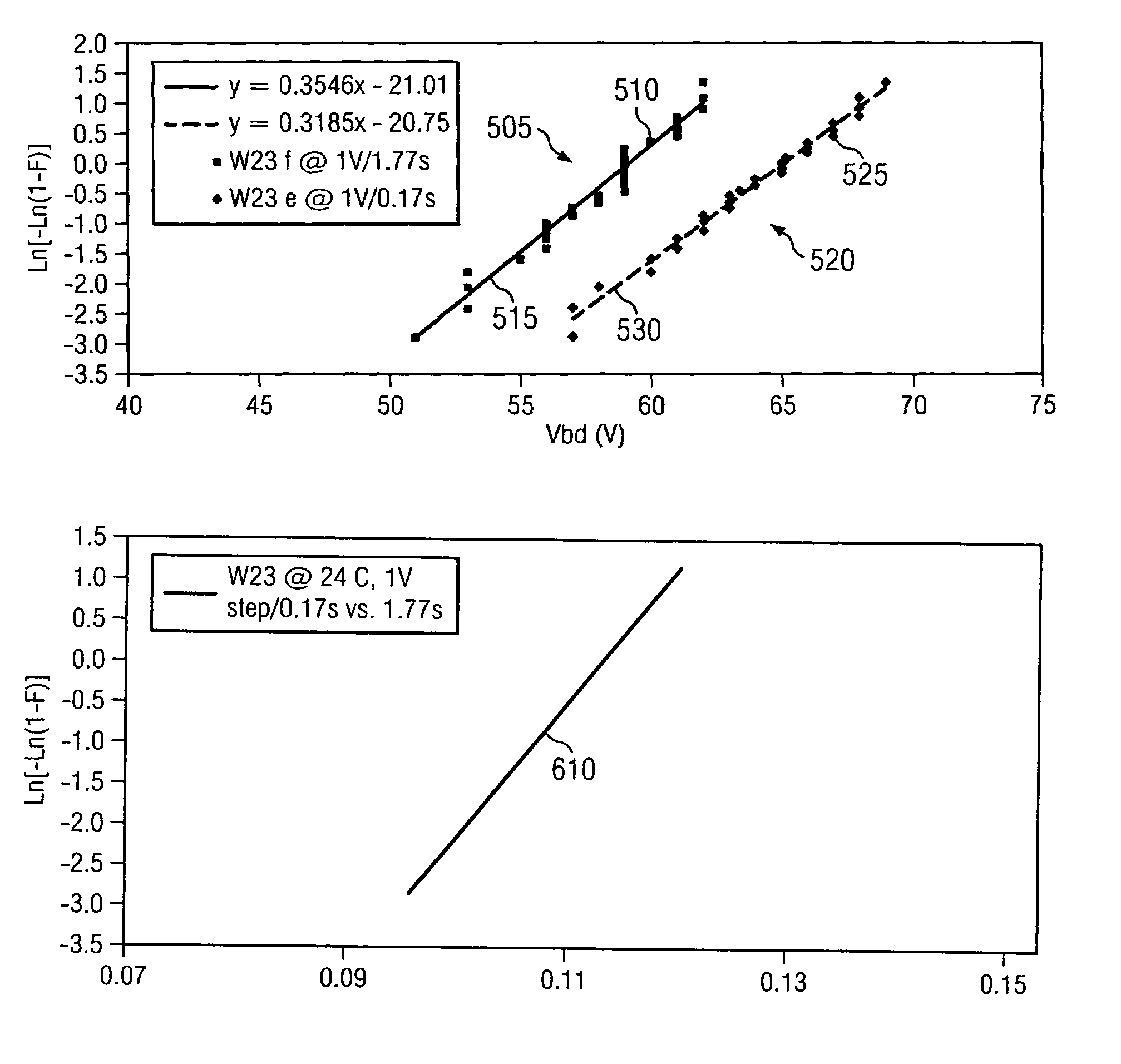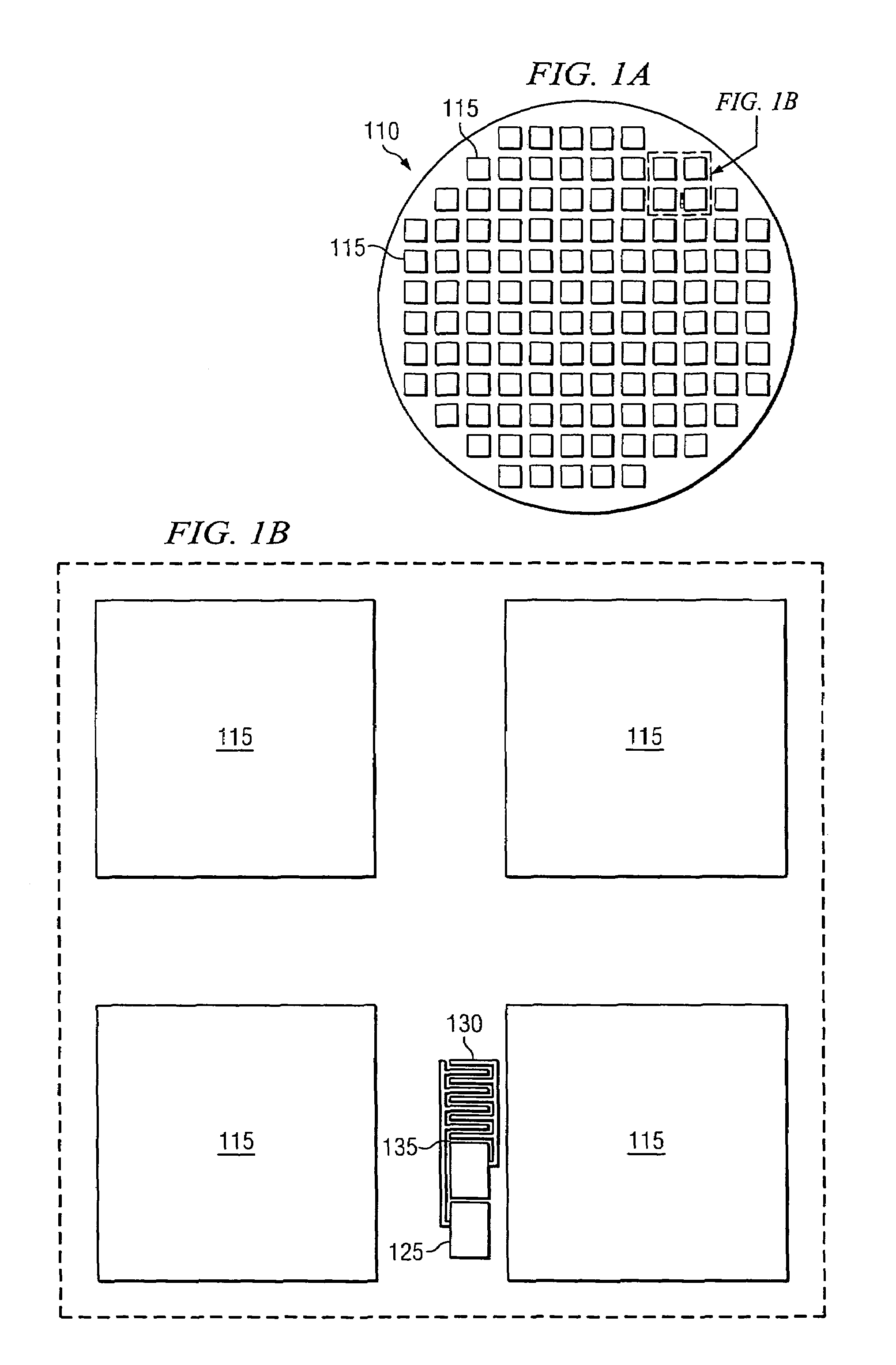Dual ramp rate dielectric breakdown testing methodology
a dielectric breakdown and ramp rate technology, applied in the direction of individual semiconductor device testing, semiconductor/solid-state device testing/measurement, instruments, etc., can solve the problem of reducing the yield of the device, the dielectric strength of new insulators no longer has the density of pure dense amorphous silicon oxide, and the inability to test a sufficient number of duts to obtain good enough statistics, etc., to achieve the effect of improving the screening of microelectronic devices
- Summary
- Abstract
- Description
- Claims
- Application Information
AI Technical Summary
Benefits of technology
Problems solved by technology
Method used
Image
Examples
Embodiment Construction
[0023]Turning initially to FIG. 1A there is illustrated an overhead view of a wafer 110, such as a microelectronics wafer or a semiconductor wafer, having integrated circuit die 115 located, thereon, as shown in FIG. 1A and FIG. 1B which is a magnified view of a delineated portion of FIG. 1A, that contain conventional integrated circuits (not shown). Associated with at least one die 115, or group of die, is a test device 125, which is schematically shown and is enlarged for illustrative purposes only. The number of test devices 125 may vary, and each die 115 may have a test device 125 associated with it, or a group of die may have one test device 125 associated therewith, which is the case shown in FIG. 1B. A group of test devices 125 forms a test sample, and in advantageous embodiments, it is desirable to have the test sample as large and mixed as practical to get a good statistical sampling across the wafer 110. It should also be noted that in some embodiments, especially during d...
PUM
 Login to View More
Login to View More Abstract
Description
Claims
Application Information
 Login to View More
Login to View More - R&D
- Intellectual Property
- Life Sciences
- Materials
- Tech Scout
- Unparalleled Data Quality
- Higher Quality Content
- 60% Fewer Hallucinations
Browse by: Latest US Patents, China's latest patents, Technical Efficacy Thesaurus, Application Domain, Technology Topic, Popular Technical Reports.
© 2025 PatSnap. All rights reserved.Legal|Privacy policy|Modern Slavery Act Transparency Statement|Sitemap|About US| Contact US: help@patsnap.com



